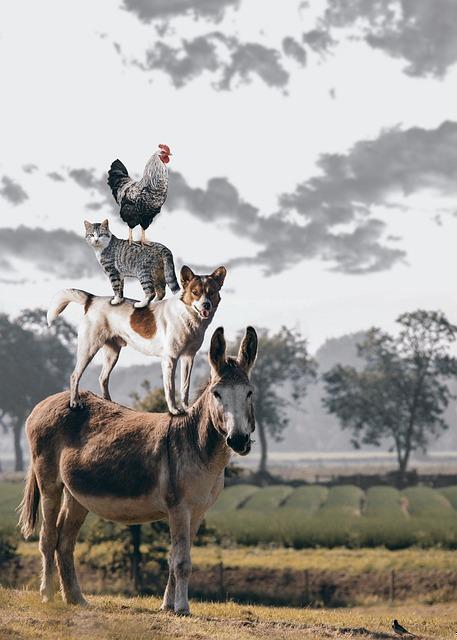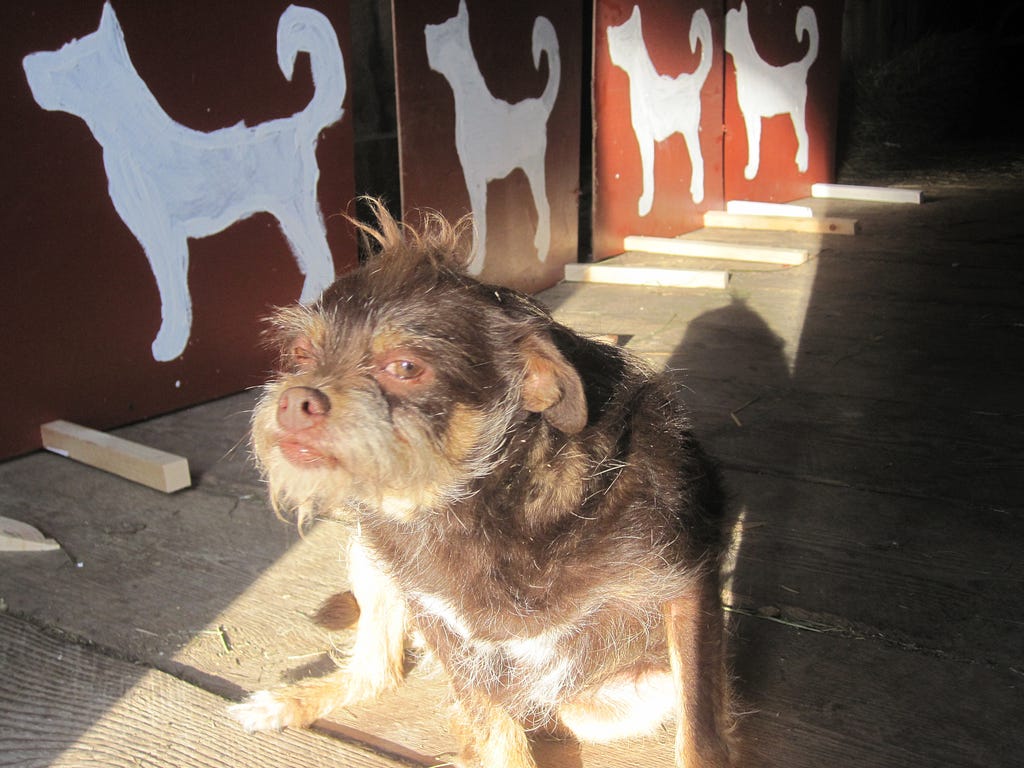Glencadia Magazine
How to Adopt and Care for a Rescue Corgi
August 19, 2025
Rescue dog Corgis are adorable, intelligent, and full of personality. At DogingtonPost, we believe these pint-sized pups deserve loving homes just as much as any ...
Trending
Golden Retriever Puppy Completely ‘Loses-It’ When He Meets A Baby Goat
August 19, 2025
No Comments
Woman Who Welcomed Stray Dog Into Her Home Sees His Face On A Poster
August 19, 2025
No Comments
Rescue Dog From Hoarding Case Transforms After 6-Weeks in Foster Care
August 19, 2025
No Comments
Editorial picks
Business owner accused of abuse after dog grooming video goes viral – WTAJ – www.wtaj.com
March 22, 2025
Business owner accused of abuse after dog grooming video goes viral WTAJ – www.wtaj.comsource
Read More →
Why it’s not ‘alright’ if your dog is friendly – The Conversation Indonesia
October 14, 2024
source
Read More →
Adopt a Pet: Friendly Felicia – Global News Toronto
November 14, 2024
Instructions: source
Read More →
Portsmouth Humane Society dealing with heating issue in dog kennels – WAVY.com
January 16, 2025
Portsmouth Humane Society dealing with heating issue in dog kennels WAVY.comsource
Read More →
Greenwood Lake woman says dog mauled at doggy day care in New Jersey – News 12 Westchester
October 22, 2024
Topics you care about, straight to your inboxTopics you care about, straight to your inboxBlaise GomezOct 22, 2024, 4:37 PMUpdated 2 hr agoShare:© 2024 N12N, ...
Read More →
Dwayne Johnson Mourns The Loss Of His Beloved Dog Hobbs – Live India – Live India TV
February 26, 2025
February 26, 2025: Dwayne “The Rock” Johnson has shared the heartbreaking news of the death of his pet dog, Hobbs, on Tuesday. The actor took ...
Read More →
But how much does breed shape a dog’s health and behavior? – The New York Times
February 11, 2025
But how much does breed shape a dog’s health and behavior? The New York Timessource
Read More →
Veterinary students’ proximity to and interpretation of a simulated “aggressive” dog before and after training – Nature.com
July 20, 2024
Veterinary students’ proximity to and interpretation of a simulated “aggressive” dog before and after training Nature.comsource
Read More →
Trailblazing: Blind Paralympian and her guide dog find missing woman on Vancouver Island – Global News
April 13, 2024
Instructions:Want to discuss? Please read our Commenting Policy first. If you get Global News from Instagram or Facebook – that will be changing. Find out ...
Read More →
Scruffy McScruffface
August 10, 2025
No Comments
A poem for a scruffy dog who urinated on precious items intentionally to piss people off and ate rancid fish rejected by hungry wild animals …
So, where’s the mud?
July 28, 2025
The New York Times spent a few days as a dog… but, well, without getting dirty? A few times here on my humble blog, I have ...
NYC PET NEWS
Around The World
a year ago
My dog has been LOVING it at Glencadia. I'm delighted to see all the fun photos that get uploaded every day. This is her second time back, and we've already booked her for a month long stay in the next few months.
The wellness checks where the dogs get weighed and checked for scratches, ticks, and overall health are reassuring to read. The Glencadia team makes sure the dogs are in tip top shape. The photos of the dogs sitting on the bench after the wellness checks are fun to see as well. Their faces are always beaming!
I was worried the first time I sent my dog because I adopted her when she had severe separation anxiety. Training wasn't getting anywhere as she was attached only to me. I think she learned to self soothe at camp being around other dogs and being in a safe environment. When she got back, her separation anxiety training went so much more smoothly!
2 years ago
We absolutely LOVE Glencadia. We have been sending our dog Astor to Glencadia for several years now. He has been over 10 times!!! Astor has gone to camp from as little as a weekend stay to a longer 2 week stay. We have recommended Glencadia to at least 10 people and they always rave about it and are SO happy we recommended it to them. We love Glencadia because of how convenient the service is. Astor is obsessed with doggy driver Phil! The pick and drop off service is an absolute game changer. Glencadia is very affordable compared to everything else in the city and Astor gets his own little vacation when we go on vacation. We always know our dog is in good hands and it is very obvious he is having the time of his life when we see him romping around with a huge smile on his face in the photos and videos. Astor is always so exhausted when he gets home because of how much fun he had with all of his new and old camp friends!! HIGHLY recommend Glencadia. We could not recommend them enough.
2 years ago
Love!! Excellent camp for my pups! Im based in NYC and recommend to all my friends. I know my dogs are well taken care of, and not stressed out by being crated in any capacity was most important to me. They can run free around the farm all day at their leisure and sleep cage-free. Dog care team are professional, always punctual with pickup and drop off, and always responsive and accommodating when needed. 10/10 would recommend to anyone with dogs that like to be social and are active and are medium-large breeds like mine.
6 months ago
Fantastic! We have a very high energy dog who desperately needs mental and physical stimulation throughout the day. When we drop him off at The Glencadia Dog Camp for vacation, not only do we know he’s safe, but he will have an amazing time with all the other dogs while we’re gone. We know this because he doesn’t look back when he leaves and looks disappointed to have to come home haha. We pay a little extra for the gourmet meals and add a nail clipping for $20 which is 100% worth it!
Though the initial $40 reservation fee can be a bit steep if you are leaving town for only a day or two, that one time fee spread out over multiple days averages to about that of a kennel. The grounds are beautiful and we love telling everyone about the great “dog resort” we found in Kinderhook, NY!
7 months ago
I just have to share how amazing Glencadia Dog Camp has been for my dog, Cocoa! For years now, I’ve been sending him there, and honestly, it’s been such a relief as a busy working professional in NYC. I can’t tell you how much peace of mind I get knowing Cocoa is in such good hands.
The prices are super reasonable, especially considering how happy and healthy Cocoa is when he comes back home. It’s like he’s had a mini vacation, and I love seeing him so excited after a stay at camp.
But the real stars of the show are the staff. They’re so kind and genuinely care about the dogs. Phil and all the dog handlers are incredibly communicative and responsive. I feel like I can always reach out if I have questions or just want to check in on Cocoa, and they’re always there to support me if I have a change in plans.
Thank you, Glencadia Dog Camp, for being such a fantastic place for cocoa. You guys are truly the best! I can’t recommend you enough to other dog owners looking for a loving environment for their dogs.
a year ago
My dog has been LOVING it at Glencadia. I'm delighted to see all the fun photos that get uploaded every day. This is her second time back, and we've already booked her for a month long stay in the next few months.
The wellness checks where the dogs get weighed and checked for scratches, ticks, and overall health are reassuring to read. The Glencadia team makes sure the dogs are in tip top shape. The photos of the dogs sitting on the bench after the wellness checks are fun to see as well. Their faces are always beaming!
I was worried the first time I sent my dog because I adopted her when she had severe separation anxiety. Training wasn't getting anywhere as she was attached only to me. I think she learned to self soothe at camp being around other dogs and being in a safe environment. When she got back, her separation anxiety training went so much more smoothly!
2 years ago
We absolutely LOVE Glencadia. We have been sending our dog Astor to Glencadia for several years now. He has been over 10 times!!! Astor has gone to camp from as little as a weekend stay to a longer 2 week stay. We have recommended Glencadia to at least 10 people and they always rave about it and are SO happy we recommended it to them. We love Glencadia because of how convenient the service is. Astor is obsessed with doggy driver Phil! The pick and drop off service is an absolute game changer. Glencadia is very affordable compared to everything else in the city and Astor gets his own little vacation when we go on vacation. We always know our dog is in good hands and it is very obvious he is having the time of his life when we see him romping around with a huge smile on his face in the photos and videos. Astor is always so exhausted when he gets home because of how much fun he had with all of his new and old camp friends!! HIGHLY recommend Glencadia. We could not recommend them enough.
2 years ago
Love!! Excellent camp for my pups! Im based in NYC and recommend to all my friends. I know my dogs are well taken care of, and not stressed out by being crated in any capacity was most important to me. They can run free around the farm all day at their leisure and sleep cage-free. Dog care team are professional, always punctual with pickup and drop off, and always responsive and accommodating when needed. 10/10 would recommend to anyone with dogs that like to be social and are active and are medium-large breeds like mine.
6 months ago
Fantastic! We have a very high energy dog who desperately needs mental and physical stimulation throughout the day. When we drop him off at The Glencadia Dog Camp for vacation, not only do we know he’s safe, but he will have an amazing time with all the other dogs while we’re gone. We know this because he doesn’t look back when he leaves and looks disappointed to have to come home haha. We pay a little extra for the gourmet meals and add a nail clipping for $20 which is 100% worth it!
Though the initial $40 reservation fee can be a bit steep if you are leaving town for only a day or two, that one time fee spread out over multiple days averages to about that of a kennel. The grounds are beautiful and we love telling everyone about the great “dog resort” we found in Kinderhook, NY!
7 months ago
I just have to share how amazing Glencadia Dog Camp has been for my dog, Cocoa! For years now, I’ve been sending him there, and honestly, it’s been such a relief as a busy working professional in NYC. I can’t tell you how much peace of mind I get knowing Cocoa is in such good hands.
The prices are super reasonable, especially considering how happy and healthy Cocoa is when he comes back home. It’s like he’s had a mini vacation, and I love seeing him so excited after a stay at camp.
But the real stars of the show are the staff. They’re so kind and genuinely care about the dogs. Phil and all the dog handlers are incredibly communicative and responsive. I feel like I can always reach out if I have questions or just want to check in on Cocoa, and they’re always there to support me if I have a change in plans.
Thank you, Glencadia Dog Camp, for being such a fantastic place for cocoa. You guys are truly the best! I can’t recommend you enough to other dog owners looking for a loving environment for their dogs.
a year ago
My dog has been LOVING it at Glencadia. I'm delighted to see all the fun photos that get uploaded every day. This is her second time back, and we've already booked her for a month long stay in the next few months.
The wellness checks where the dogs get weighed and checked for scratches, ticks, and overall health are reassuring to read. The Glencadia team makes sure the dogs are in tip top shape. The photos of the dogs sitting on the bench after the wellness checks are fun to see as well. Their faces are always beaming!
I was worried the first time I sent my dog because I adopted her when she had severe separation anxiety. Training wasn't getting anywhere as she was attached only to me. I think she learned to self soothe at camp being around other dogs and being in a safe environment. When she got back, her separation anxiety training went so much more smoothly!
























